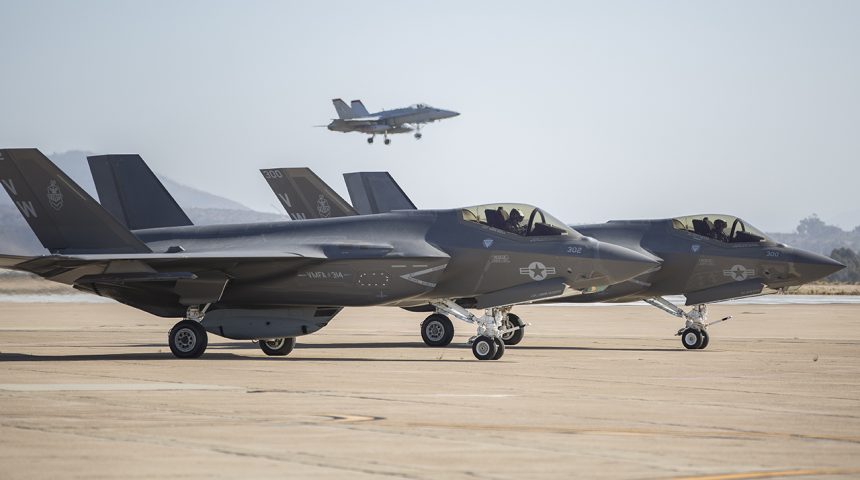VMFA-314 declares Initial Operational Capability (IOC) for the F-35C Lightning II.
The first F-35C squadron of the United States Marine Corps, the Marine Fighter Attack Squadron (VMFA) 314 “Black Knights”, based at Marine Corps Air Station (MCAS) Miramar, California, has declared IOC for the CATOBAR (Catapult Assisted Take Off But Arrested Recovery) variant of the Lightning II.
The “Black Knights” trained alongside VFA-125 at NAS Leemore in 2019. The F-35C of VMFA-314, CF-35/169601, modex VW-434 (a former VFA-125 modex, that would be later changed to a U.S. Marines one), made a public appearance at Tinker AFB Air Show, on Jun. 1, 2019. A few days later, on Jun. 5, flew in formation over the Sierra Nevada mountain ranges with the VFMA-314 squadron F/A-18A++ CAG bird, flown by Lieutenant Colonel Cedar Hinton aircraft “passing the lead” as part of the F/A-18 Sundown with the Black Knights.
The first F-35C returned at MCAS Miramar, home of the 3rd Marine Aircraft Wing (VMFA-314’s parent unit) on Jan. 21, 2020, marking the arrival of the first F-35C to Fleet Marine Force and, on March 20, 2020, the squadron received its Safe-For-Flight Operations Certification (SFFOC).
The IOC certifies that the squadron meets the Headquarters Marine Corps standards, which define the minimum number of trained Marines, mission ready aircraft and trained pilots needed in order for a squadron to become IOC complete.
The IOC declaration enables VMFA-314 to deploy the F-35C onto aircraft carriers: the “Black Knights” will carry out the second ever deployment of the F-35C after the “Argonauts” of VFA-147, which will be integrated into the Carrier Air Wing 2, aboard the Nimitz-class USS Carl Vinson, next year.
“The F-35 is an expeditionary platform that extends the reach of our Marines and machines, and increases our ability to support joint and allied partners at a moment’s notice,” said Maj. Gen. Christopher Mahoney, 3rd MAW commanding general in a public release. “By effectively employing the F-35, MAGTF [Marine Air-Ground Task Force] commanders have the potential to dominate our adversaries in a joint battlespace, in the air and out at sea.”
“Our maintenance department was critical to the success of IOC. In addition to accepting and inspecting the multiple aircraft that arrived throughout the year, the Marines maintained a high level of aircraft readiness,” said Lt. Col. Duncan French, VMFA-314 executive officer. “Those mission capable aircraft allowed the pilots to train in the appropriate missions required of IOC, as well as contributed towards the readiness metrics of IOC.
The F-35C and the F-35B are the future of all TACAIR for the Marine Corps. The U.S. Marine Corps plans to buy 420 F-35s: 353 F-35Bs and 67 F35Cs. The types will replace the F/A-18, AV-8B, and EA-6B (with the latter already retired). The F-35s “will provide the MAGTF strategic agility, operational flexibility and tactical supremacy”: while the STOVL (Short Take Off Vertical Landing) variant provides the ability to operate from austere airfields and amphibious assault ships, the Carrier Variant allows the USMC to integrate its squadrons with the U.S. Navy Carrier Air Wings aboard Navy’s flattops.









